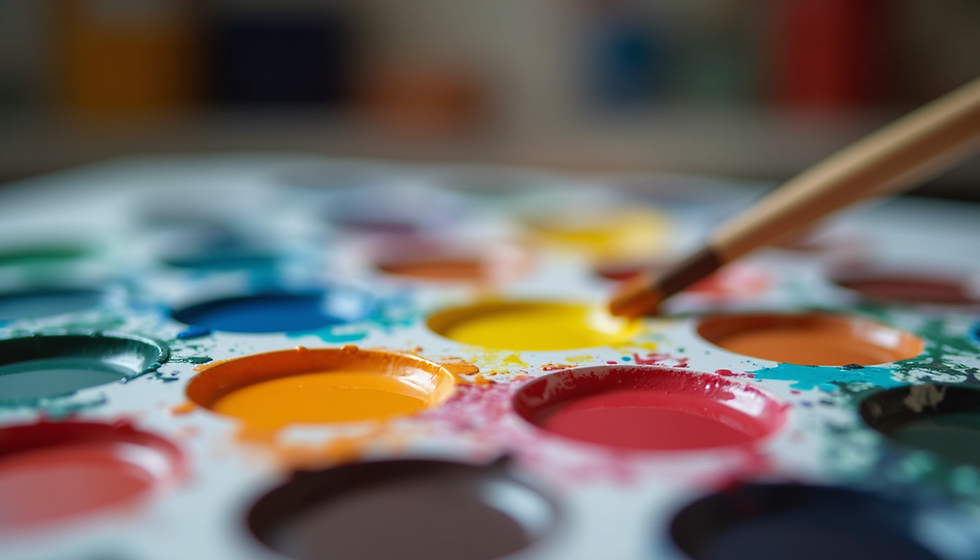The Evolution of Modern Art: A Closer Look at its Unknown Narrative
- wpdevart
- Mar 14
- 3 min read
Modern art has always been a vibrant mix of styles, movements, and ideas. Emerging in the late 19th century and extending through the 20th century, it includes diverse forms of expression that challenged traditional norms. This journey into the lesser-known stories of modern art highlights its evolution and significant role in shaping today’s culture.
The Birth of Modernism
Modern art began in the wake of the Industrial Revolution, a period that drastically changed society. This transformation inspired artists to move away from conventional methods and subjects. For instance, Impressionism emerged as a reaction against the detailed realism of the time. Artists like Claude Monet famously painted "Impression, Sunrise," capturing the interplay of natural light. This work was revolutionary; it marked a shift to an emphasis on perception rather than precise representation.
As modernism took hold, abstraction became a prevalent theme. Movements such as Cubism and Futurism redirected the focus from depicting reality to expressing ideas. Pablo Picasso's "Les Demoiselles d'Avignon" and Kazimir Malevich's "Black Square" are perfect examples of how these artists broke down traditional forms, encouraging a deeper connection between the viewer and the piece.
Notable Movements and Influences
The story of modern art consists of a range of important movements, each adding richness to its narrative. Expressionism prioritized emotional experiences, allowing artists to express deep feelings rather than simply capturing the physical world. For example, Edvard Munch’s "The Scream" powerfully evokes feelings of anxiety and existential dread.
Surrealism, on the other hand, explored the unconscious mind and dream imagery. Salvador Dalí's "The Persistence of Memory," with its melting clocks, challenges our understanding of time and reality, indicating a world where rationality fades. The Dada movement emerged in response to the chaos of World War I, utilizing absurdity and chance to critique societal norms.
In the mid-20th century, Abstract Expressionism gained prominence, with artists like Jackson Pollock introducing the idea of spontaneous creation. His technique of “drip painting,” seen in works such as "No. 5, 1948," focuses on the process of art-making itself as much as the final product, inviting personal interpretation from viewers.
The Intersection of Art and Technology
As we entered the 21st century, modern art began to merge with technology. Digital art, video installations, and interactive exhibits have completely transformed the gallery experience. For example, the digital artwork "Everydays: The First 5000 Days" by Beeple sold for over $69 million at auction. This merge not only challenges the traditional definitions of art but also sparks discussions about accessibility and representation in the digital landscape.
Interactive installations, such as those by teamLab, allow visitors to engage with art in ways that were unimaginable just a decade ago. This fusion of art and technology offers new avenues for understanding and experiencing creativity.
The Cultural Impact of Modern Art
Modern art is more than just visually appealing; it serves as a reflection of societal issues and cultural changes. Throughout its history, it has acted as a platform for dialogue about critical topics like identity, politics, and the human experience. For example, works of art like Ai Weiwei’s "Sunflower Seeds," which consists of millions of handcrafted porcelain seeds, highlights themes of mass production and individuality.
Moreover, modern art invites critical thinking, encouraging audiences to question the influences shaping our world. It echoes the challenges and triumphs of society, making it a vital component of our cultural narrative.
Reflecting on the Journey of Art
The evolving narrative of modern art is a rich tapestry woven from a multitude of movements and influences. From the Impressionists' attempts to capture light to today’s digital explorations, modern art continues to inspire fresh generations of artists and art lovers. By understanding its timeline, we can appreciate its many forms and connect with the deeper stories that influence our cultural landscape. As we navigate between tradition and innovation, modern art remains a crucial part of the shared human experience.



Comments